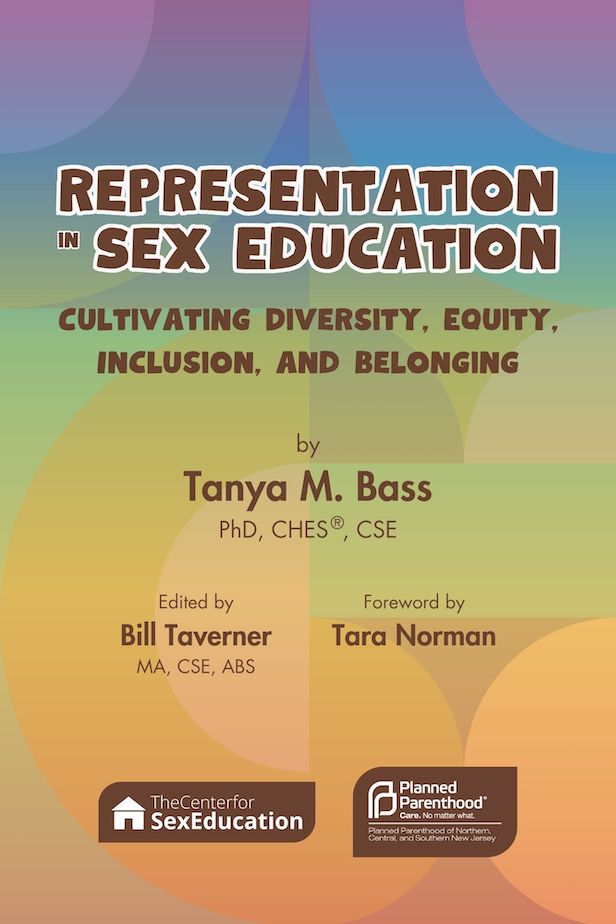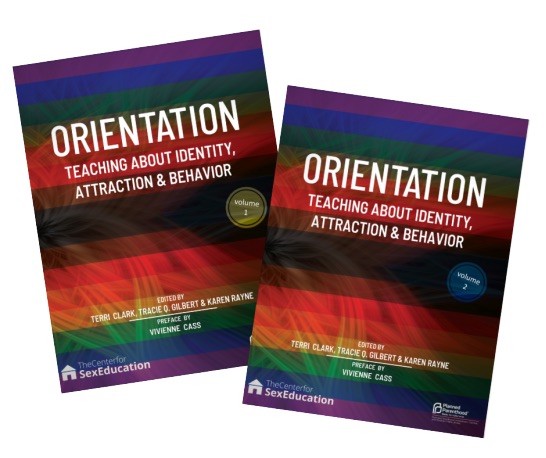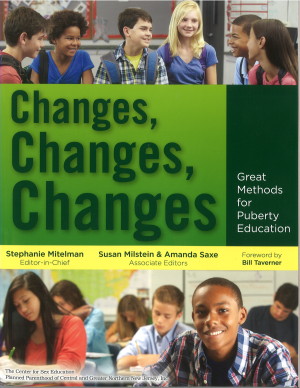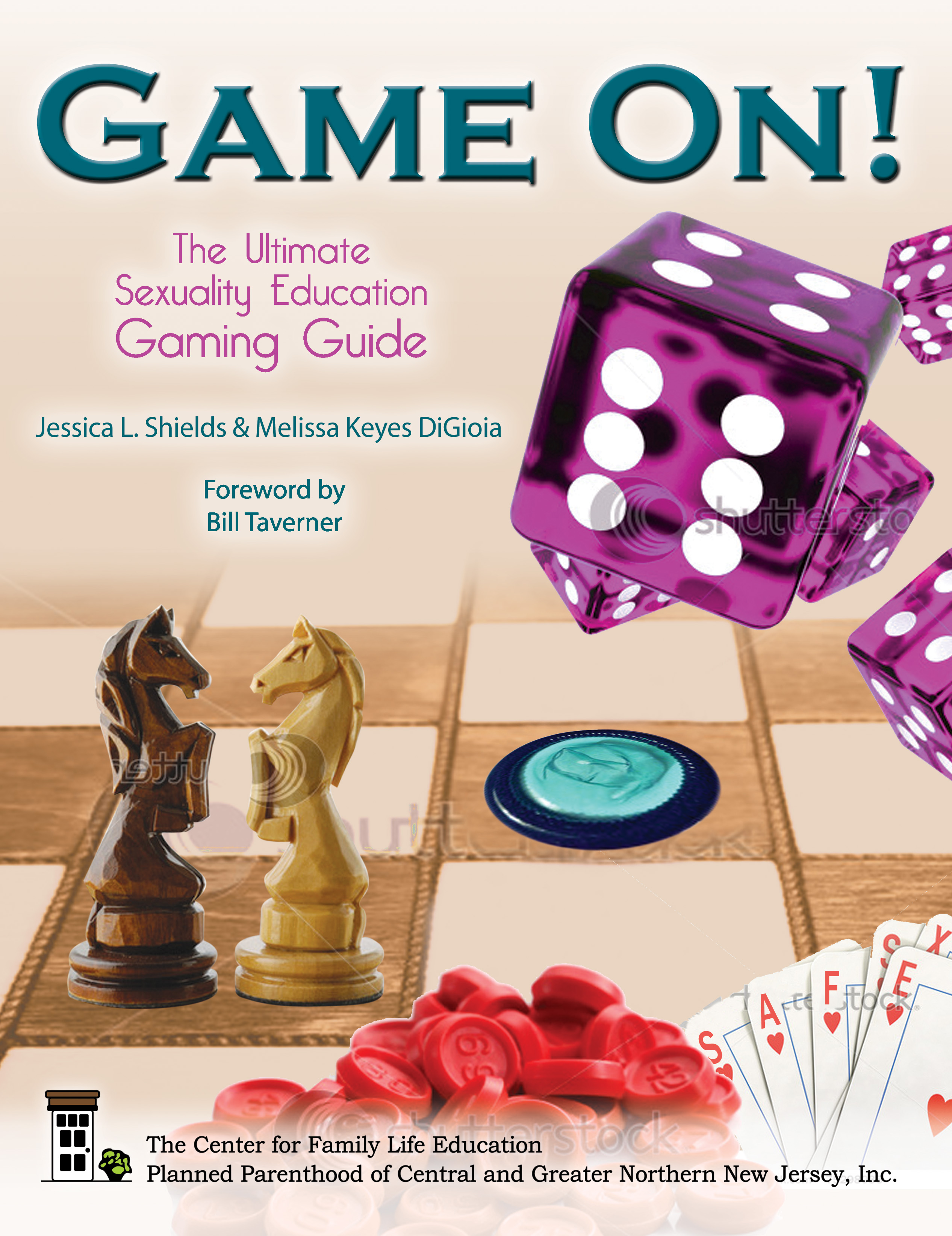Representation in Sex Education $29

The Center for Sex Education is thrilled to announce the publication of Representation in Sex Education: Cultivating Diversity, Equity, Inclusion, and Belonging by Tanya M. Bass, PhD, CHES®, CSE and edited by Bill Taverner, MA, CSE, ABS.
Every student and community deserves to thrive. This can only be achieved when everyone can learn in a welcoming, safe environment with materials and perspectives that reflect their identities. Yet for decades, sex education curricula have often lacked a lens that represents the experiences of people of diverse backgrounds. Many outdated sex education lesson plans rely on the “he/she” binary or otherwise exclude nonbinary and transgender students. Contraceptive and safer sex lessons do not factor in America’s racist history in sexual and reproductive health care which may make students of color ambivalent or untrusting. Lesson plans and teaching manuals have few authors, contributing authors, or editors who identify as people of color, meaning that the lens of lived experience is absent from these works. Lessons with kinesthetic activities often lack guidance for students who cannot stand up or “walk to the center of the circle,” and little consideration is given to ensuring that students who are blind, deaf, or have other disabilities feel included.These are just a few examples; many students with other diverse identities have been marginalized in sex education.
However, while we acknowledge historical patterns within sex education, change through expanded representation is possible. Representation in Sex Education: Cultivating Diversity, Equity, Inclusion, and Belonging seeks to address these existing gaps in sex education curricula and materials.
Fueled by the urgent need for truly inclusive sex education, Dr. Tanya Bass and Bill Taverner used their wealth of experience within sex education and commitment to diversity, equity, inclusion, and belonging (DEIB) to develop Representation in Sex Education. This resource compiles feedback and DEIB recommendations from more than 100 sex educators nationwide, raising awareness among educators about the crucial need to represent the experiences of diverse backgrounds in sex education.
As Tara Norman beautifully stated in the book’s foreword, “Empathy is a necessary component of progress, as it fuels the motivation to effect change within individuals, their communities, and broader societal systems. Without empathy, people are often unlikely to act on behalf of others.” We aspire for this guidebook to serve as a valuable resource to all professionals who deliver sex education. This guidebook offers practical tips to professionals on cultivating a learning environment that respects and values diversity while promoting equity and a true sense of belonging in sex education. We hope this resource will empower professionals to deliver sex education that is truly representative, inclusive, and supportive for all learners.
Representation in Sex Education is available now at the Center for Sex Education’s online shop, www.SexEdStore.org. The guidebook is available as a free e-book, and print copies are available for purchase.
The Center for Sex Education (CSE) is the national education division of Planned Parenthood of Northern, Central, and Southern New Jersey (PPNCSNJ). The CSE publishes more than 25 sex ed teaching manuals and hosts the National Sex Ed Conference, the nation’s largest conference for sexuality educators. PPNCSNJ’s “Care. No Matter What” values extend far beyond the health center: ensuring diversity, equity, inclusion, and belonging across every aspect of the organization is a key priority. This work includes building an environment where every employee can flourish, every patient can flourish, and every community can achieve its full health potential. PPNCSNJ strives to make equity-centered investments that empower employees, patients, and communities to be their whole selves. These efforts are an ongoing journey, and PPNCSNJ remains committed to challenging ourselves to do better.
Foreword
by Tara Norman
“She’s Black! YES, YES, YES, YES! Finally, a Black mermaid!”
“She’s Brown like me, YAY!”
“She’s so pretty. She has the same skin as me!”
“Finally, I’ve been waiting for another Black mermaid!”
“She’s so pretty. Black girl magic!”
“She looks like me!”
These heartfelt reactions, accompanied by tears of joy and excited screams, vividly illustrate the fundamental importance of representation. While various storytelling and training tools exist, one recent standout in shaping understanding of representation was the 2022 remake of Disney’s The Little Mermaid. The movie trailer and reaction videos featuring the quotes reflected above went viral, igniting a wave of emotional reactions that magnified the significance of representation in media.1
Given the scarcity of sex education resources reflecting diverse backgrounds, I felt compelled to utilize the reaction videos to The Little Mermaid to illustrate how representation in media extends to broader societal needs, connecting this to the critical necessity for representation in healthcare and sex education. The newly developed guidebook by Dr. Tanya Bass and Bill Taverner, Representation in Sex Education: Cultivating Diversity, Equity, Inclusion, and Belonging, addresses this very need.
In the live-action adaptation of The Little Mermaid, Halle Bailey stars as Ariel, marking a momentous milestone as the first Black actress to portray the iconic Disney princess. This advancement in media resonated deeply with audiences of all ages, particularly within the Black community. The reaction videos flooded the Internet and captured the genuine shock and joy of Black children, adolescents, and adults – evidence of the impact of representation.
Disney has long been acknowledged for its ability to shape perceptions through captivating stories and characters. However, the remake of The Little Mermaid creates its own unique legacy with an embodied visual affirmation of inclusion that simultaneously fosters cultural empathy around representation.
Empathy is a necessary component of progress, as it fuels the motivation to effect change within individuals, their communities, and broader societal systems. Without empathy, people are often unlikely to act on behalf of others.
Those who have faced a lack of representation often inherently understand its importance, while individuals who have consistently seen their identity reflected throughout life may struggle to grasp its significance, never having experienced the absence of representation.
Although lived experiences shouldn’t have to be captured on video or recorded to be regarded as valid, our society often requires tangible evidence to advance change, especially from those in positions of privilege. Furthermore, the reactions to the movie trailer, primarily from children, naturally cultivate a deeper sense of empathy, given society’s tendency to be more compassionate towards children.
The heartwarming reactions to The Little Mermaid became a living illustration of the power of representation. Consequently, at Planned Parenthood of Northern, Central, and Southern New Jersey, we incorporated the movie trailer and reaction videos into our training and educational initiatives for staff, conferences, student groups, and community partnerships, resulting in significant impact.
As evidenced by the quotes from the reaction videos to the movie trailer, The Little Mermaid deeply resonated with many Black individuals, providing a profound sense of validation. During the training, the emotions captured in the videos of children watching The Little Mermaid trailer closely echoed the feelings experienced by many Black individuals when they saw themselves represented – a powerful validation of their identities. This feeling of visibility extends well beyond The Little Mermaid and highlights the broader impact of representation for Black and marginalized communities in society. Often, individuals from diverse backgrounds experience a blend of astonishment and elation when they encounter depictions of themselves in spaces where they have historically been marginalized.
The effect on white individuals viewing the reaction videos was impactful yet notably different. Given that most white people’s experiences with individuals and institutions reflect their shared identities, many were moved to tears upon realizing they had taken for granted an experience that so many children of marginalized identities never had. In many ways, it fostered a willingness among white people to acknowledge and challenge their privilege, a topic that can be quite challenging to address effectively.
During the training, I vividly recall many white individuals experiencing a deep sense of compassion upon realizing the substantial impact of the absence of representation on children as young as two years old, as demonstrated by the reaction videos. I utilized this opportunity to encourage participants to channel their empathy and apply it to understanding the value of marginalized populations seeing themselves reflected in healthcare and sex education.
This discussion emphasized the necessity of a twofold investment in representation. Our dialogue focused on increasing the presence of individuals from diverse backgrounds in various spaces and fostering environments that authentically reflect their experiences and identities. Such emphasis on representation prompts us to consider our role in laying the groundwork for achieving greater inclusivity.
The curb-cut effect, coined by Angela Glover Blackwell, 2 illuminates the need to prioritize diverse experiences. The curb-cut effect refers to the introduction of curb cuts in sidewalks, initially intended to accommodate people in wheelchairs but ultimately benefiting society as a whole – such as individuals pushing strollers or walking dogs. Designing sex education to address the specific needs of marginalized populations will ultimately benefit all learners, much like the universal advantages of sidewalk indentations.
This brings us back to the urgent need for this resource developed by Dr. Tanya Bass and Bill Taverner, Representation in Sex Education: Cultivating Diversity, Equity, Inclusion, and Belonging. Their wealth of experience within sex education and commitment to diversity, equity, inclusion, and belonging (DEIB) make them invaluable leaders in developing this vital resource.
For decades, sex education curricula have lacked a lens that represents the experiences of people of diverse backgrounds. Many outdated sex education lesson plans rely on the “he/she” binary or otherwise exclude nonbinary and transgender students. Contraceptive and safer sex lessons do not factor in America’s racist history in sexual and reproductive health care that may make students of color ambivalent or untrusting. Lesson plans and teaching manuals have few authors, contributing authors, or editors who identify as people of color, meaning that the lens of lived experience is absent from these works. Lessons with kinesthetic activities often lack guidance for students who cannot stand up or “walk to the center of the circle,” and little consideration is given to ensuring that students who are blind, deaf, or have other disabilities feel included.
While these examples offer just a glimpse of the pressing need for a resource that encompasses DEIB in sex education, they highlight the urgent necessity for representation in sex education. Reflecting on the children’s reactions to seeing themselves represented in The Little Mermaid, one can imagine the extensive impact of representation across diverse communities, abilities, races, genders, ages, and sexual orientations within sex education. Representation within sex education not only promises a more inclusive educational experience but also holds the potential for improved health outcomes.
In addition to being life-changing, representation is life-saving.
Representation in Sex Education: Cultivating Diversity, Equity, Inclusion, and Belonging meets this call to action by addressing the existing gaps in sex education materials. This impactful resource compiles feedback and DEIB recommendations from sex educators nationwide, raising awareness among educators about the crucial need to represent the experiences of diverse backgrounds in sex education. Doing so empowers educators to make real-time adjustments and seamlessly incorporate DEIB into their teaching pedagogy.
As a Black woman working at the intersection of DEIB, sex education, and healthcare, I have a personal and professional appreciation for the guidebook’s capacity to underscore the multifaceted need to prioritize representation. This resource offers a profound sense of validation and visibility, emphasizing the crucial significance of diverse identities in sex education. Akin to the impact of Disney’s The Little Mermaid, this resource is a powerful illustrative tool for allies and educators, enabling them to comprehend the overarching value of representation and apply it effectively to foster meaningful change.
Just as Disney’s The Little Mermaid captured hearts and sparked a wave of emotional resonance, Representation in Sex Education: Cultivating Diversity, Equity, Inclusion, and Belonging informs the path toward a future where every individual sees themselves reflected, supported, and valued in sex education.
Want a digital copy of Representation in Sex Education? Just click here!
Table of Contents
Here is a list of the chapters and contents in Representation in Sex Education: Cultivating Diversity, Equity, Inclusion, and Belonging
- Acknowledgements
- Introduction
- Principles for Sex Education
- What Does the Literature Say?
- The Survey
- Age and Generation
- Class and Socioeconomic Status
- Culture
- Disability
- Gender Identity
- Geographic Location
- Language
- Race
- Representation of Communities Served
- Sexual Orientation
- Intersection of Multiple Identities
- Overall Grades
- Homework
- Endnotes
“Dr. Bass continues her steadfast dedication to the professional development of sex educators with this handbook! Offering succinct and tangible guidelines, she takes the nuance of diversity, equity, inclusion, and belonging and makes it easy to understand and implement without diminishing the importance and necessity of work. Representation in Sex Education is THE platinum standard of forward momentum that the field of sex education needs. I look forward to integrating it into my own pedagogical practice, as well as a learning tool for my students.”
Dr. G (she/her/ella)
AASECT-Certified Sexuality Educator, Abantu Bahle Global, Inc.
“I felt a profound sense of ‘being seen’ while reading Representation in Sex Education, which validated my experiences as a professional in the sexuality sector. As a student in the classroom and as a professional training others to use evidence-based interventions, I have felt invisible and lacking a sense of belonging. Existing resources have not always included me or many others from marginalized communities.
Representation in Sex Education offers tangible strategies for ensuring inclusivity in sex education, celebrating our commonalities and differences. I value how it leverages national survey responses evaluating diversity, equity, inclusion, and belonging as the groundwork for enhancing sex education. This book serves as a valuable resource for fortifying existing initiatives and fostering new ones.”
Dr. Monique Howard, MPH
The Public Health Organization JEDI Strategist
“Representation in Sex Education speaks to a much-needed and ever-evolving conversation about the nuances necessary for engaging in an inclusive and accessible learning environment. As readers, we are called to consider the benefits and necessity of representation in sex education through a diversity, equity, inclusion, and belonging framework supported by considerations and best practices. The book lends a refreshing view of the many identities and points of intersectionality that must be considered when delivering material to diverse groups. Representation in Sex Education acts as a catalyst for further conversation about representation and access in sex education.”
Ash Peguies (they/them/elles)
Special requests?
We can accomodate! For bulk orders or paying by purchase order, please click below to get in touch:




